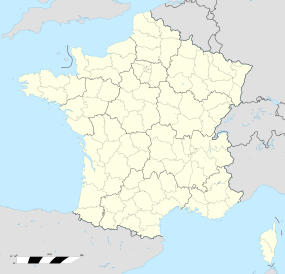Alesia (city)

Vercingetorix Memorial in Alesia
|
|
| Location | Alise-Sainte-Reine |
|---|---|
| Region | Burgundy, France |
| Coordinates | 47°32′13″N 4°30′00″E / 47.537°N 4.500°E |
| Type | Circular rampart or oppidum |
| Area | c. 140 hectares (350 acres) |
| History | |
| Builder | Celts, later Roman |
| Material | Stone, earth, wood |
| Periods | Iron Age |
| Cultures |
Celts, La Tène later Gallo-Roman |
| Site notes | |
| Archaeologists | Eugène Stoffel, Michel Reddé, Siegmar von Schnurbein |
| Public access | Yes |
Alesia was the capital of the Mandubii, one of the Gallic tribes allied with the Aedui. The Celtic oppidum was conquered by Julius Caesar during the Gallic Wars and afterwards became a Gallo-Roman town. Its location was controversial for a long time. It is today considered to have been located on Mont-Auxois, near Alise-Sainte-Reine in Burgundy, France.
Alesia is best known for being the site of the decisive Battle of Alesia in 52 BC that marked the defeat of the Gauls under Vercingetorix by the Romans under Julius Caesar. Caesar described the battle in detail in his Commentarii de Bello Gallico (Book VII, 69–90). The battle's outcome determined the fate of all of Gaul: in winning the battle, the Romans won both the Gallic Wars and dominion over Gaul.
The enormous measures taken during the battle were impressive: in only six weeks, Caesar's troops built a ring of fortifications 15 km long (circumvallation) around Alesia and an additional ring 21 km long (contravallation) around that to stop reinforcements (around 250,000 men according to Caesar) from reaching the Gauls.
After being conquered by Caesar, Alesia became a Gallo-Roman town. It featured a town centre with monumental buildings such as temples and a forum. There was also a theatre.
For a long time after the abandonment of the Roman town, the location of Alesia and thus the site of the important battle was unknown and subject to speculation. In the 19th century, Emperor Napoleon III developed an interest in the location of this crucial battle in pre-French history. He was writing a biography of Caesar and saw the command of Vercingetorix over all Gaulish armies as a symbol of the French nation. At the same time he realized that the future French nation was heavily influenced by the Roman victory and centuries of rule over Gaul.
...
Wikipedia

